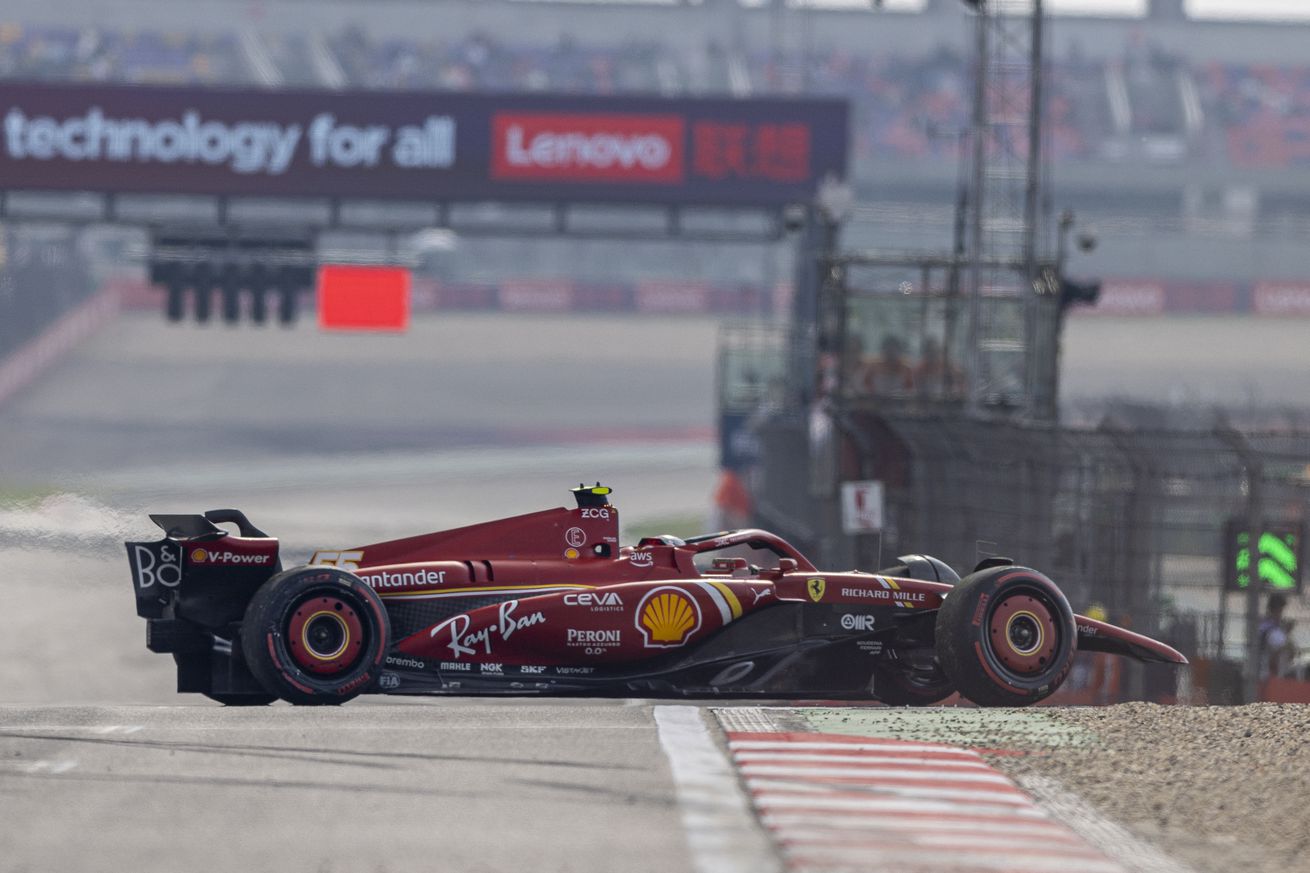The F1 summer shutdown may be upon us, but there is always time to tweak the rules
At the Chinese Grand Prix last April two incidents involving Fernando Alonso and Carlos Sainz Jr. had race stewards reaching for the Sporting Regulations.
Now, to clarify said regulations Formula 1 has revised its rules during the summer shutdown.
The first incident involved a clash on the track between the two drivers during the F1 Sprint Race at the Chinese Grand Prix. In the closing stages of that Sprint Race, the two drivers came together, with Alonso’s AMR24 suffering a puncture. Alonso limped back to the pits but retired from the Sprint Race after 17 of 19 laps.
Following the Sprint Race, both drivers were summoned to a hearing with race officials. Following that hearing Alonso was handed a ten-second penalty for causing the collision, and three points were added to his Super License. Yet, as Alonso had retired from the race the ten-second penalty did not impact his finishing position.
Normally, when a driver is handed a penalty but retires from a race, they are given a grid drop at the next race they enter. This is what happened to Esteban Ocon, for example, for the collision he caused with teammate Pierre Gasly on the opening lap of the Monaco Grand Prix. However, as race stewards noted at the Chinese Grand Prix the rules lacked clarity regarding penalties handed down during F1 Sprint Races would then be applied at the Grand Prix that same weekend.
“As an aside to the FIA, we note that the language in the regulations as to when a car has retired and the resultant consequences on penalties that may be imposed or served, especially when that car is otherwise classified, is somewhat unclear and we would recommend that the FIA considers making the necessary amendments to bring greater clarity to this issue,” wrote the race stewards back in April.
On Wednesday the FIA updated Article 54.3 of the Sporting Regulations involving penalties. That section now reads as follows:
“If any of the four (4) penalties above are imposed upon a driver, and that driver is unable to serve the penalty due to being unclassified in the sprint session or the race in the case of a)[a five-second penalty] or b) [a ten-second penalty] or due to retirement from the sprint session or the race in the case of c) [a drive-through penalty] or d) [a ten-second stop-and-go penalty], the stewards may impose a grid place penalty on the driver at their next race.”
Under this revised portion of the Sporting Regulations, Alonso would face a grid drop for the Grand Prix.
The other major tweak to the Sporting Regulations released Wednesday stems from qualifying for the Chinese Grand Prix. Sainz crashed during Q2, which brought out the red flag. However, Sainz could continue driving his SF-24 and he remained in the session, participating in Q3. Despite his crash requiring a change of his front wing, Sainz managed to qualify in seventh.
Aston Martin protested Sainz’s qualifying results, pointing to Article 39.6 of the Sporting Regulations, which read at the time: “Any driver whose car stops on the track during the qualifying session … will not be permitted to take any further part in that session.”
Despite the language of Article 39.6, race officials dismissed Aston Martin’s protest, noting that in practice race officials were more lenient in prior situations. “The FIA team explained that so long as the car was able to restart and continue from a stopped position within a reasonable time, that would ordinarily be permitted,” wrote race officials at the Chinese Grand Prix.
“The typical time would be around 30 seconds, though that varied depending on the circumstances,” continued race stewards. “The teams themselves said that they had previously attempted to agree what they considered to be a reasonable length of time before a car would be considered ‘stopped.’ Unfortunately, they were not able to come to a final agreement on the maximum time allowed.”
The revision to Article 39.6 addresses this situation, but not in the manner you might expect. Instead of trying to come up with a time allotment, the revised Sporting Regulations focus instead on whether the driver in question needed assistance in rejoining the track. “Any driver whose car stops in any area other than the Pit Lane during the qualifying session or the sprint qualifying session and receives physical assistance will not be permitted to take any further part in that session,” reads the revised Article 39.6.
As Sainz did not need “physical assistance” to return to the track and make his way back to the pit lane, his actions would have been permitted under the revised Sporting Regulations.













